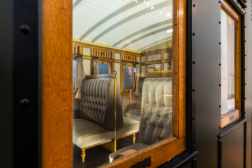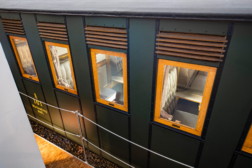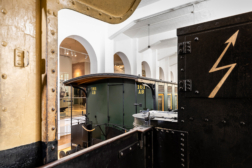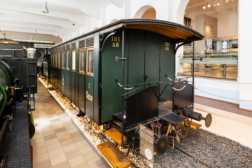Intercommunicating coach no. 161 AB
Open saloon coach with a central gangway
1868
In the early days of the railway, passenger coaches in Germany were usually divided into compartments, each with their own door to the station platform. Their major disadvantage was that there was no way to move between compartments unless the train was stopped at a station. The less common intercommunicating coach, on the other hand, had a central gangway and could be entered via platforms at each end of the coach.
he idea was brought from America by Württemberg official Ludwig Klein. By as early as the 1850s, open-plan coaches with a central aisle had become established in the Kingdom of Württemberg. Now the passengers could leave their seats during the journey and stretch their legs. Not everyone was pleased by this development, however. Some well-healed travellers complained at the noise and disturbance caused by fellow passengers, especially when boarding or leaving the train.




